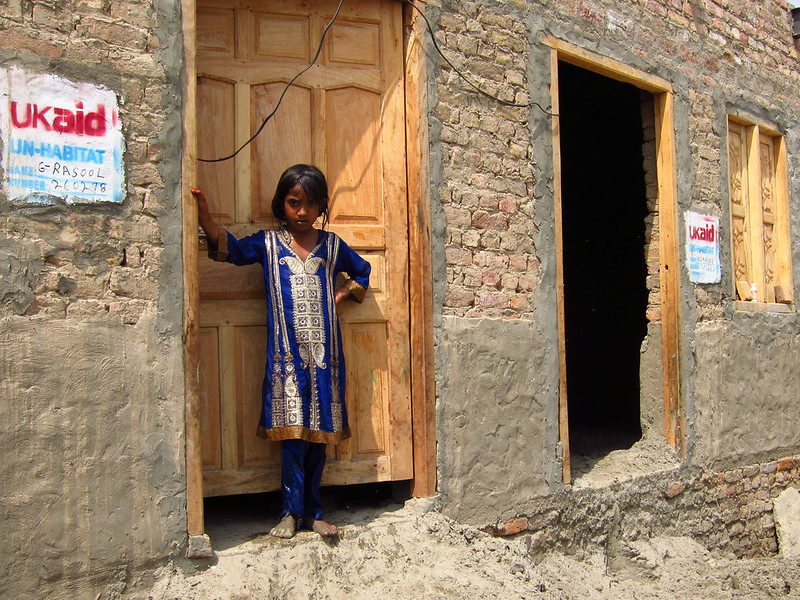5 ways small businesses can prepare for climate change
Climate adaptation is typically discussed in the context of countries, cities or multinational corporations. But smaller and more local businesses will also be affected by global warming. How should they approach the need to adapt – and how can technology help?
Here are five considerations for business of all sizes.
1. Is your company at risk?
One reason why smaller businesses are less often included in the conversation about adaptation is that few have the resources to take the first step – assessing the risks to their operations.
However, rapid progress in artificial intelligence is bringing down the cost of modelling different climate-related risks for specific localities, sectors and organisations. A recent report by Forrester assesses eight leaders in this emerging marketplace: The Climate Service, ESGAnalytics.Ai, Esri, Four Twenty Seven, Jupiter Intelligence, Risk Management Solutions, Verisk and XDI.
Climate risk analytics is a complex area, given the limited usefulness of historical data and wide range of uncertainties. The solutions being pioneered by companies such as these provide user-friendly data visualisation for decision-makers to explore scenarios and get a better understanding of their organisation’s specific vulnerabilities.
Use of virtual reality to create a “digital twin” of a city is another improving technology that should become more accessible to local businesses.
2. How to protect physical assets
Better understanding climate risk in the area where a business is located can help to inform decisions about how its buildings might be made more resilient to climate-related hazards such as wildfires, hurricanes, rising sea levels or extreme rainfall – for example, through floodproofing technologies or raising elevation levels.
In some cases, businesses may need to consider relocating to a less vulnerable area – a decision that could easily be left too late. In a recent report, McKinsey point out the risk that real estate values in a given area may decline precipitously rather than gradually, as market participants collectively realise that they have been underestimating the area’s vulnerability to a particular risk and properties become effectively impossible to insure.

Raising elevation levels of building protects against floods. Photo by Dan Casperz/DFID
3. Guarding against infrastructure disruption
It has also been recommended that businesses consider building a backup inventory in supply chains to protect against potential interrupted production, as well as establishing the means to source from alternate locations and suppliers.
While generally more practicable for larger businesses, this is another area where increasingly affordable organisation-specific climate risk analytics could help smaller companies identify the risk of disruption to production facilities or transit of goods that could affect their supply and distribution networks.
Beyond transport networks, extreme weather events also increase the risk of disruptions to power, water and telecommunications infrastructure. The Center for Climate Energy Solutions recommends that one step many smaller businesses can take to improve their climate resilience is to add on-site energy-generating facilities, such as rooftop solar installations or combined heat and power systems.

Solar panels could help make your business energy-independent. Photo by Vivint Solar on Unsplash
4. Increasing future workability
Workers become less productive in extreme heat – and beyond a certain level, work becomes effectively impossible. During Europe’s heatwave in July 2019, for example, some restaurants had to close temporarily as it was too hot to work.
As climate change increases the frequency of extreme heat events, companies will need to consider how they ensure safe and productive working conditions – through green or cool roofs, for example, efficient air conditioning, or adjusting schedules to avoid work in the hottest part of the day

Altering work schedules could stop people having to perform at the hottest part of the day. Photo by Bournemouth Borough Council
5. Preparing for disasters
Another recommendation from the Center for Climate Energy Solutions is that businesses put in place disaster recovery plans. Planning for disasters could include, for example, on-site emergency shelters for workers. A growing range of free or low-cost apps can provide early warnings of extreme weather events, such as Tornado by the American Red Cross, Kitty Code’s Hurricane HD, and NOAA Hi-Def Radar.
There are limits to what smaller businesses can do on their own to adapt to climate change, so a final consideration is supporting public policies that can help – for example, developing insurance and other financial products that enable individual businesses to mitigate risk.
The ideas presented in this article aim to inspire adaptation action – they are the views of the author and do not necessarily reflect those of the Global Center on Adaptation.